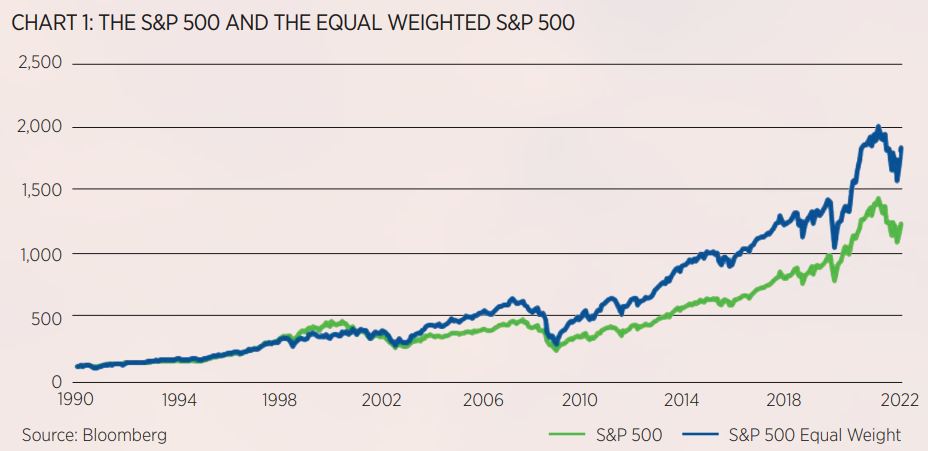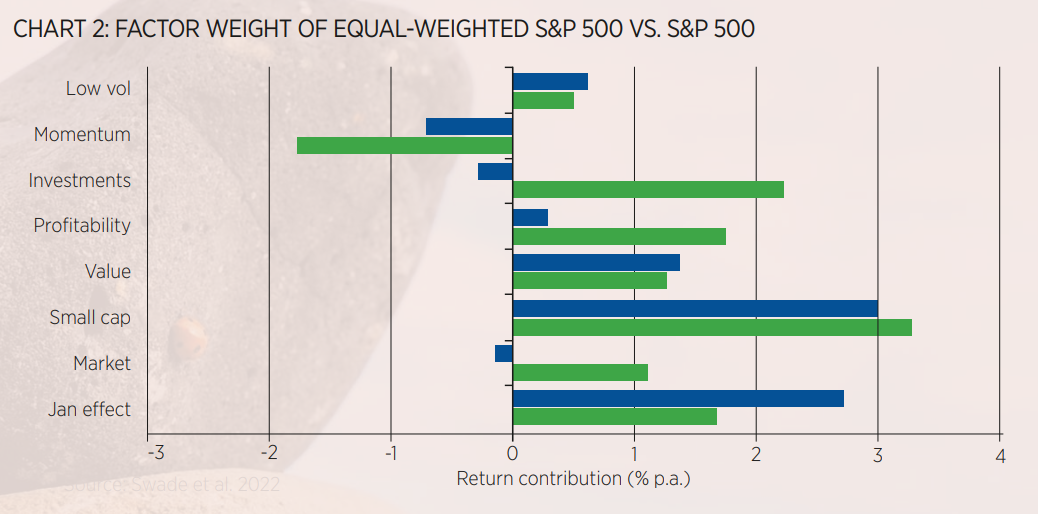I have been an advocate of equal-weighted portfolios essentially since the original study by de Miguel and others was published as a working paper in 2006. I have argued for more than 15 years, once you take uncertainty about future returns of assets into account, an equal-weighted portfolio is almost impossible to beat in the long run.
The reason why equal-weighted portfolios work in my view has to do with our inability to forecast future returns with any reasonable degree of certainty.
But of course, other people would argue that equal-weighted portfolios outperform because they give you systematic exposure to risk factors that outperform in the long run.

Factor exposures
Clearly, if you put the same amount of money into all the stocks in your portfolio you are introducing a significant small cap bias compared to a market cap-weighted index like the S&P 500.
You are also introducing a bias in favour of value stocks since value stocks typically are value stocks because their market cap has dropped significantly in the past relative to their earnings.
But which factor dominates and are there any other factor exposures that play a role? This is the question that Alexander Swade and his colleagues from Lancaster University tried to answer.

Chart 2 shows that the biggest contribution to the difference in returns between equal-weighted and market cap-weighted S&P 500 comes from the small cap bias. This bias is about three times as important as the value bias inherent in the equal-weighted index.
But there are other important effects. Equal-weighted portfolios benefit less from momentum effects than market cap-weighted indices, therefore creating an underperformance if the market is driven predominantly by momentum.
On the other hand, equal-weighted portfolios benefit from their higher allocation to highly profitable companies. And then there are a host of other factors that benefit the equal-weighted portfolio. But as Chart 2 shows, outside of the size and value effects the other contributions can vary a lot.
Changing regime
As the chart shows, the contributions to equal-weighted outperformance before and after the Global Financial Crisis (GFC). The key difference between these periods is that after the GFC, we had zero interest rates and low growth.
As I have written before, that has significantly changed stock market behaviour. Going forward, we may be heading back into an era of higher interest rates or, as I believe, the current episode of higher rates is just temporary and we are heading back to a low growth, low rates environment.
Either way, the factor exposures of equal-weighted will change, but two factors will remain the key driver of outperformance: three parts small cap and one part value.
Joachim Klement is investment strategist at Liberum Capital and author of Klement on Investing blog
This article first appeared in ETF Insider, ETF Stream's monthly ETF magazine for professional investors in Europe. To access the full issue, click here.


